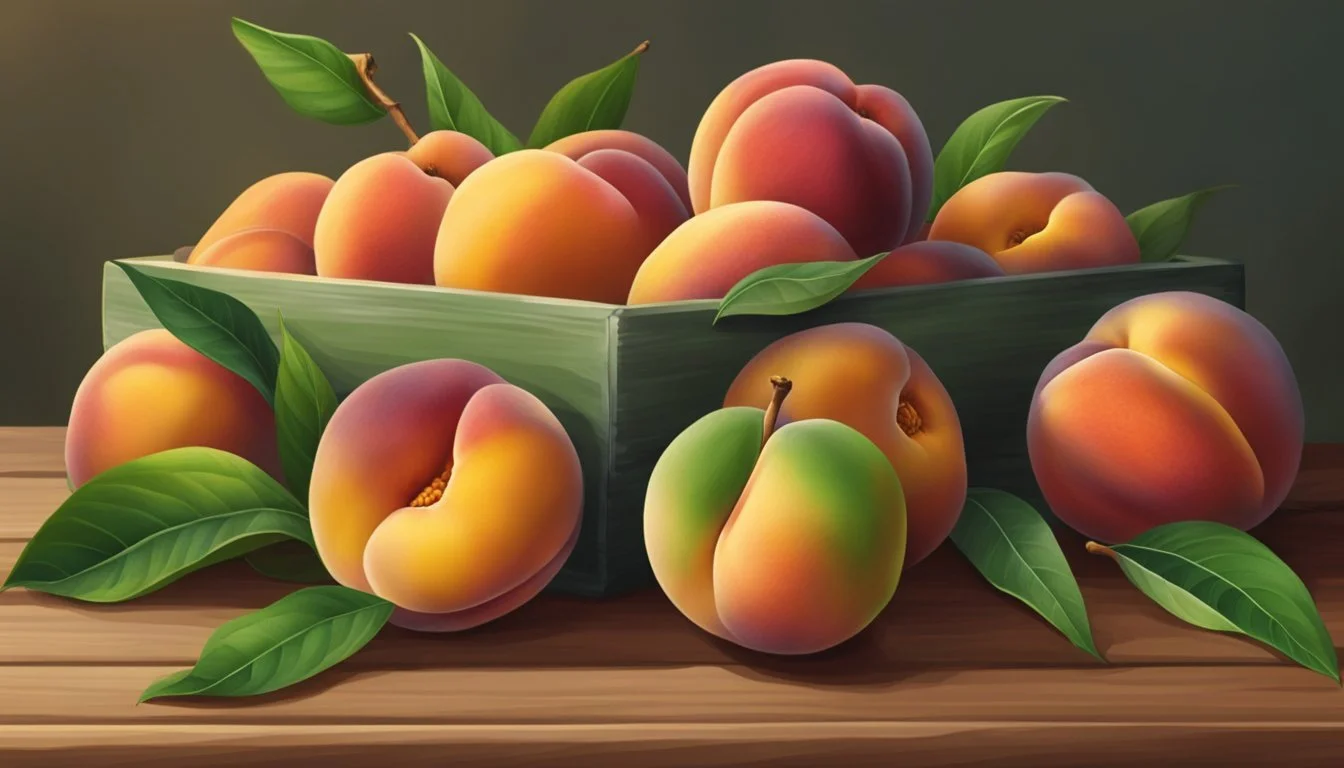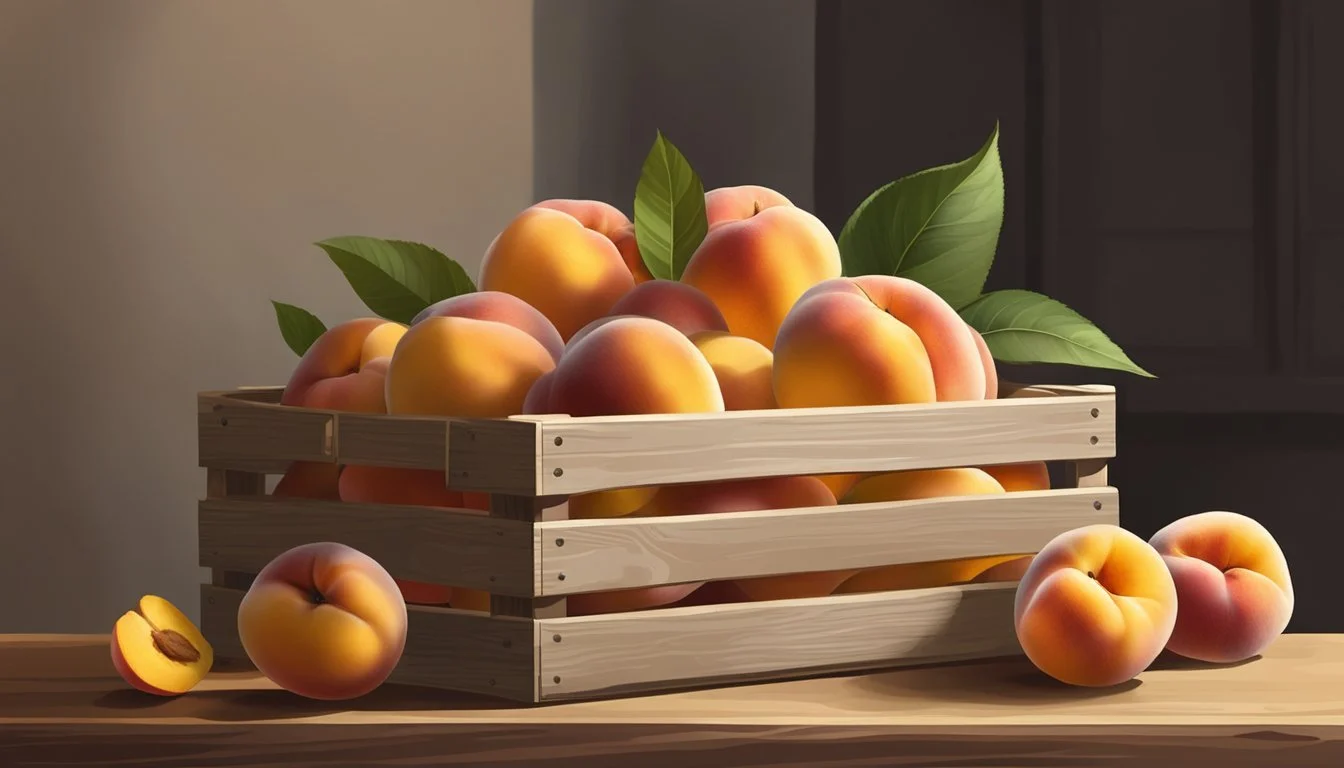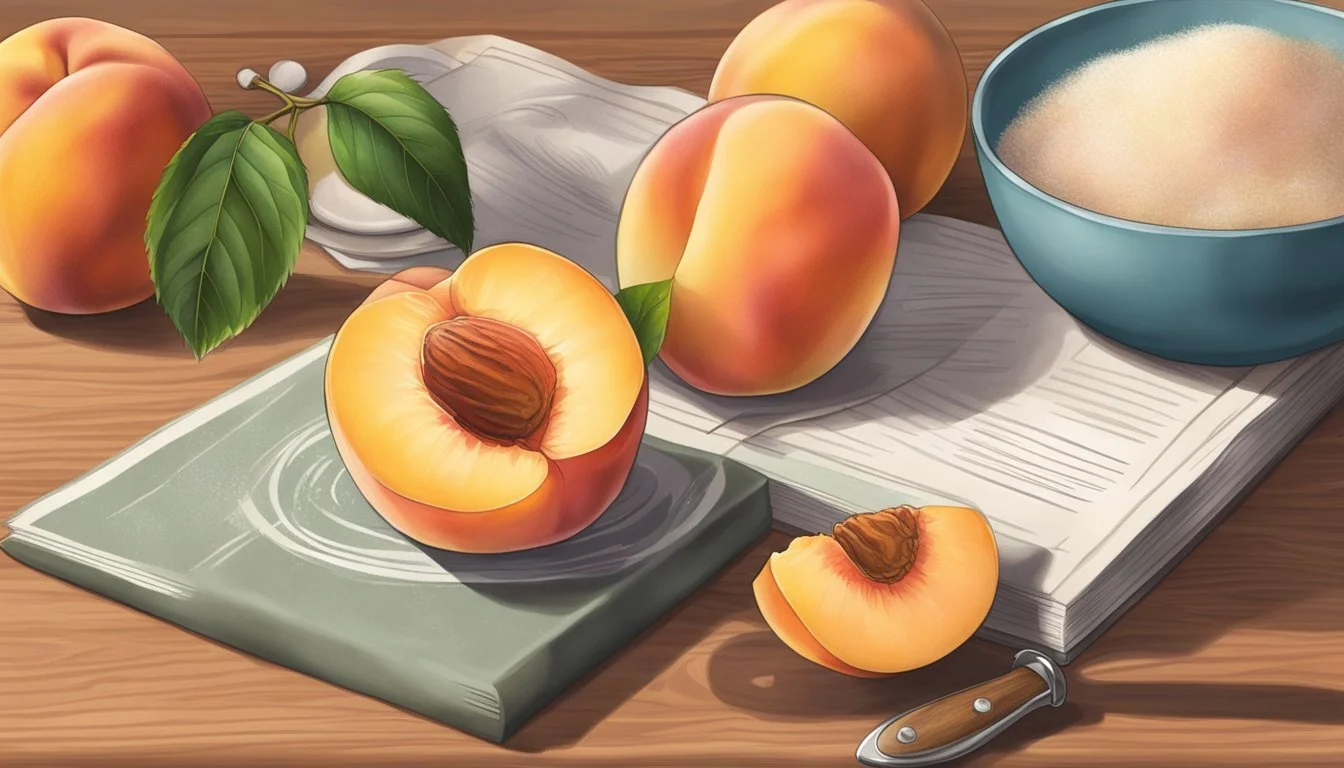How to Tell If Dixired Peaches Are Ripe
Your Essential Ripeness Checklist
Distinguishing the ripeness of Dixired peaches is a delectable skill that peach enthusiasts and culinary aficionados value for its promise of juicy, flavorful fruit. This guide offers a comprehensive look at the intricacies of identifying ripeness in this specific variety of peach. An understanding of ripeness not only heightens the enjoyment of peaches but also maximizes their culinary potential. Dixired peaches, with their appealing blush and sweet aroma, signal their readiness to be enjoyed through several sensory cues.
When it comes to judging the ripeness of Dixired peaches, both appearance and texture play pivotal roles. A ripe Dixired peach typically exhibits a deep yellow or creamy background color and may have a rosy red blush depending on sun exposure. The area near the stem gives away its readiness with a slight softness to the touch, a clue often more reliable than color alone. Assessing ripeness is not only about selecting the perfect fruit for immediate consumption but also about anticipating how the fruit will continue to ripen after harvest, ensuring the peaches reach their peak at the ideal time.
Key Takeaways
Ripeness is detected through color, touch, and aroma cues.
Knowledge of ripeness informs both selection and optimal use.
Proper storage extends the enjoyment of ripe peaches.
Understanding Peach Ripeness
Identifying the perfect ripening point of Dixired peaches is crucial for the best flavor experience. This guide provides clear indicators to help determine when these peaches have reached their peak ripeness.
The Science of Ripeness
Ripeness in peaches is the stage of fruit maturation where sugar levels are ideal, and the fruit tissues soften. The ripening process involves enzymes breaking down acids and complex compounds into sugars and other flavor components. For a ripe peach, this results in a sweet taste and a pleasant texture.
Color and Appearance Indicators
Ground Color: Look for a deep yellow base color, which is a typical sign of a ripe Dixired peach. Green hues indicate that the peach is not ripe.
Blush: A ripe fruit often has a healthy red blush over the base color due to sun exposure; absence may suggest immaturity.
Dark Spots and Bruising: Avoid peaches with these marks, as they could indicate an overripe or damaged fruit.
Texture and Feel Clues
A ripe Dixired peach should have a fuzzy, but not overly woolly, exterior. The texture should yield slightly to gentle pressure, especially near the stem, which is softer in ripe peaches. Firm fruit often needs more time, whereas a very soft or wobbly texture might indicate an overripe peach.
Scent and Aroma Profile
A ripe peach emits a sweet aroma that is distinctive and enticing. If there’s barely any smell, the peach may need more time. Conversely, an overly strong or fermented smell can signal that the peach is past its prime. The aroma is a reliable sign of the internal quality and ripeness of the fruit.
Methods to Hasten Ripening
To accelerate the ripening process of Dixired peaches, several effective techniques can be employed. These methods manipulate the environment around the fruit to encourage quicker natural ripening.
Room Temperature Ripening Techniques
For a natural approach, one can simply place Dixired peaches on a kitchen counter at room temperature. Keeping the peaches out of direct sunlight ensures a consistent ripening cycle. It is important to check the fruit daily for softness and aroma, which are indicators they are reaching optimal ripeness.
Paper Bag Method
Placing Dixired peaches in a paper bag is a recognized method to speed up ripening. The trapped ethylene gas, naturally emitted by the peaches, will circulate within the bag and stimulate ripening. Remember to store the bag at room temperature, and for even faster results, add an apple or banana to the bag which also emit ethylene gas, further accelerating the process.
Using Ethylene-Producing Fruits
Introduce ethylene-producing fruits, such as bananas or apples, to the peaches in a confined space like a fruit bowl. The ethylene gas from these fruits acts as a ripening agent, greatly hastening the peach's ripening time. One should monitor this setup closely since it can lead to over-ripening if left unchecked.
How to Store Ripe Peaches
Proper storage of ripe Dixired peaches can significantly extend their shelf life while maintaining their succulent texture and flavor. The following guidelines focus on both refrigeration for short-term preservation and freezing techniques for long-term storage.
Short-Term Refrigeration Tips
To retain the freshness of ripe peaches in the short term, it is essential to store them correctly in the refrigerator. Here's how:
Temperature: Keep peaches in the coldest part of the refrigerator.
Humidity: Store in a crisper drawer with moderate humidity to prevent dehydration.
Container: Place the peaches in an airtight container or a perforated plastic bag to allow for slight airflow while preventing moisture accumulation.
Single Layer: Arrange the peaches in a single layer to avoid bruising.
The ripe peaches can typically remain fresh in the fridge for a few days.
Freezing Techniques for Longevity
For maintaining the quality of ripe peaches over several months, freezing is the recommended approach. Implement these steps to freeze peaches effectively:
Preparation:
Wash the peaches thoroughly.
Peel and slice the fruit into wedges.
To prevent browning, toss the slices with a small amount of lemon juice.
Initial Freeze:
Spread the peach slices in a single layer on a parchment-lined baking sheet.
Place the baking sheet in the freezer until the peaches are firm.
Final Storage:
Transfer the frozen peach slices to a freezer-safe bag or container.
Remove as much air as possible before sealing.
Label the bag with the date of freezing.
Utilizing these freezing techniques, Dixired peaches can be kept in good condition for several months. When ready to use, they can be defrosted in the refrigerator or incorporated directly into recipes.
Selecting Peaches at the Grocery
When choosing Dixired peaches at the grocery store, it's essential to look for indicators of ripeness and quality through visual clues, texture, and seasonality to ensure the fruit's natural sweetness and juiciness.
Visual Inspection
One should first evaluate the peach's color, seeking out a deep yellow base with red spots, which indicates peak ripeness and exposure to adequate sunlight during growth. The presence of a vibrant color near the stem end is particularly telling of a peach's maturity. Additionally, the brighter and more saturated the peach's color, without any hints of green, the closer it is to being perfectly ripe for snacking.
Assessing Firmness and Bruises
The ideal peach for immediate consumption should yield slightly to a gentle squeeze, comparable in firmness to a tennis ball. One must handle the fruit carefully, using a soft grip to avoid bruising. Rebuff any peach that is as hard as a baseball, as they are likely underripe, or conversely, those with a mushy feel which may be overripe. An absence of bruises also signifies that the peach has likely been handled well and maintained its freshness.
Selecting by Season
Dixired peaches reach their peak during the summer months, which is the best time to find them at optimal ripeness in grocery stores. Selecting peaches in season can lead to a more flavorful experience, as they're likely to have ripened naturally rather than being forced to ripen off the tree. Furthermore, peaches in season often have a more appealing price and freshness due to their abundance.
Preventing and Identifying Overripe Fruit
Dixired peaches, known for their rich flavor, can become overripe, leading to a mealy texture and less desirable taste. Identifying the signs of overripeness and taking steps to avoid damage are critical in ensuring the best fruit experience.
Signs of Overripeness
Appearance: Overripe Dixired peaches may exhibit a wrinkly, sagging skin lacking the characteristic fuzz. As the fruit goes past its prime, the vibrant color turns to a darker, sometimes mottled shade. The once-uniform shape may appear misshapen.
Texture: A peach surpassing its peak ripeness becomes notably soft to the touch. Gently pressing near the stem can reveal a lack of firmness, indicating that it's beyond the ideal softness for consumption. These peaches are more prone to developing bruises with even the gentlest handling.
Flavor: The flavorful, juicy experience of a ripe Dixired peach diminishes when overripe. The sweetness may become cloying or fade, and the texture turns mealy, impacting the overall culinary enjoyment.
Avoiding Fruit Damage
Handling: To prevent bruises, handle peaches with care, especially when transporting or storing, as they bruise easily when overripe. It is best to avoid stacking them and instead lay them in a single layer if possible.
Storage: Keep unripe peaches at room temperature away from direct sunlight, allowing them to ripen gradually. Once ripe, Dixired peaches can be stored in the refrigerator to slow further ripening. However, prolonged cold storage may lead to loss of flavor and a mealy texture.
Selection: When selecting, choose peaches that are firm with a slight give around the stem—indicating ripeness without being overripe. This balance ensures the fruit will be delightfully soft and flavorful without being damaged or overly mealy.
Culinary Uses for Ripe Peaches
Ripe peaches are a versatile fruit that can be used in a myriad of dishes, ranging from simple snacks to more complex desserts and baked goods. Their natural sweetness and flavor make them a delightful ingredient to work with in the kitchen.
Simple Snack Ideas
Ripe peaches can be enjoyed on their own or with a few simple additions. They can be:
Sliced and mixed with yogurt or cottage cheese for a wholesome snack.
Cut into wedges and served alongside cheese and crackers for a quick appetizer.
Blended into a peach smoothie for a refreshing drink, combining the peaches with a liquid base like almond milk, a sweetener if desired, and other fruits.
Baking with Peaches
For those who love to bake, peaches provide a sweet canvass for many creations:
Peach pie: A classic dessert where ripe peaches are sliced and tossed with sugar, a bit of flour, and spices before being encased in pastry.
Peach cobbler: This dessert features peaches in a sauce, topped with a biscuit or dumpling dough and baked until golden.
Recipes for crisps and cobblers often call for ripe peaches because their flavor intensifies during the baking process.
Creating Peach Desserts
Ripe peaches are the star of many decadent desserts, where their sweetness and flavor shine:
For a peach ice cream, puree the peaches and mix them into a creamy custard base before churning.
Sauce made from ripe peaches adds a sweet, rich flavor when drizzled over desserts like cheesecake or pound cake.
Inventive desserts like peach-infused pastries or tarts leverage the sweetness and moisture of ripe peaches to enhance the end product.
Tips and Tricks for Peach Enjoyment
When savoring Dixired peaches, the discerning palate looks for peak ripeness and complementary pairings. This section guides the reader through enhancing flavors to serving suggestions, ensuring every peach is enjoyed to its fullest potential.
Enhancing Peach Flavors
To underscore the natural sweetness and distinct fragrance of ripe Dixired peaches, one may consider a light brush of lemon juice. The acid in the lemon juice subtly amplifies the peach's flavor without overpowering its delicate, floral scent. Keeping peaches at room temperature until ripe ensures full development of their fragrant aroma, characteristic of climacteric fruits.
Pairing Peaches with Other Foods
Dixired peaches, known for their juicy sweetness, are excellent when paired with other foods. They complement a variety of flavors from the grocery store's fruit aisle:
Fruits: Balance their sweetness with tart fruits like nectarines or berries.
Dairy: Serve with creamy cheeses for a savory contrast.
Proteins: Pair with grilled chicken or pork, as the fruit's sweetness offers a fresh counterpoint.
Serving Suggestions
For inspiring peach recipes, one need only combine ripe Dixired peaches with a few kitchen staples:
Raw: Enjoy sliced peaches on their own or tossed in a fruit salad.
Cooked: Grill or bake them to concentrate their sweetness and serve as a dessert or a side dish.
Preserved: Make jams or chutnies to capture their flavor for year-round enjoyment.
Each serving method respects the peach's profile, offering versatile options for any culinary enthusiast.





